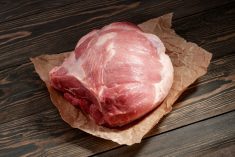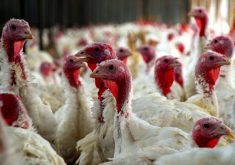Recent advances in gene editing technology could potentially help create disease-resistant animals.
In a recent study, my colleagues and I showcased the potential of gene editing to protect chickens from the threat of avian influenza.
This disease is caused by an ever-evolving virus that gets around numerous biosecurity measures such as good hygiene, restricted bird movements, surveillance through appropriate testing or selective elimination of infected birds.
Read Also

When farmers vote against their interests
U.S president Donald Trump has left many clues over the years that many of his actions weren’t going to necessarily be in the best interests of American farmers.
A gene editing breakthrough would stem the huge economic losses currently suffered as a result of bird flu outbreaks. It would also be a significant step in controlling a disease that, although rarely, has caused serious sickness and death in humans.
Outbreaks of bird flu around the world cost billions of dollars in losses. The United States Department of Agriculture reported that up to 50 million birds died from bird flu in 2022. Recently, the South African Poultry Association said more than seven million chickens were destroyed after outbreaks were detected in the first half of 2023.
Beyond the economic implications, bird flu outbreaks also pose a risk to human health.
Prior to the COVID-19 pandemic, bird flu was considered a possible trigger for a devastating human pandemic. This prompted international surveillance led by the World Organisation for Animal Health, the World Health Organization and the Food and Agricultural Organization of the United Nations.
The fear is well-founded as the three flu pandemics of the 20th century – including the 1918 flu pandemic that claimed tens of millions of lives – originated from birds, as did the outbreak of concern in Hong Kong in the late 1990s.
Vaccination is a primary method for preventing bird flu outbreaks in chickens. However, the effectiveness of vaccines is limited because the bird flu virus rapidly evolves. This makes existing vaccines less effective over time.
Also, there are multiple strains of the bird flu virus, but a vaccine is effective against only one specific strain. It’s necessary to match a vaccine with the prevailing strain causing an outbreak. Using vaccines may also involve substantial costs and practical hurdles of distribution.
In contrast, gene editing could target a protein or proteins within chickens that are vital for all strains of bird flu, effectively stopping the virus in its tracks.
Gene editing refers to the process of making a precise change in a specific gene in an animal to introduce traits such as resistance to a particular disease, increased productivity or characteristics that enhance animal welfare.
It’s important not to confuse gene editing with genetic modification, which entails transferring a gene from one species to another. This distinction is necessary for regulatory purposes, especially as the older genetic modification technology has faced stringent regulations in many countries, hampering its development.
To produce the gene-edited chickens in our study, we used the powerful molecular scissors known as CRISPR/Cas9 to make a single gene edit. We targeted the ANP32A protein in chickens.
Compared to normal chickens hatched simultaneously, these gene-edited chickens reached maturity without any discernible adverse consequences on their health and wellbeing.
To test their resistance, we exposed the gene-edited chickens to a low dose of the bird flu virus. Remarkably, nine out of 10 of these birds displayed complete resistance, and no transmission occurred to other chickens.
Taking a more ambitious step, we inoculated the gene-edited chickens with a high, unnatural dose of the virus – 1,000 times the low dose. This time, five out of the 10 inoculated gene-edited chickens became infected.
We also found that the bird flu virus was capable of adapting to use the edited ANP32A protein, as well as two related proteins – ANP32B and ANP32E. But we demonstrated through experiments in cells that simultaneously editing all three proteins could completely suppress the virus.
Ongoing research aims to identify the specific combination of gene edits needed to create the next generation of gene-edited chickens, providing complete and permanent protection against bird flu.
Gene editing should be regarded as an essential tool for preventing and controlling deadly animal diseases.
Supportive government regulations will be required to promote the development of gene editing aimed at enhancing animal health and welfare.
The potential for disease-resistant animals to protect global food security and public health is a compelling reason to pursue this innovative path in biotechnology.
– Alewo Idoko-Akoh DVM, MSc, PhD is a research associate, School of Biochemistry, at the University of Bristol. This article first appeared in the Conversation, by Reuters.















